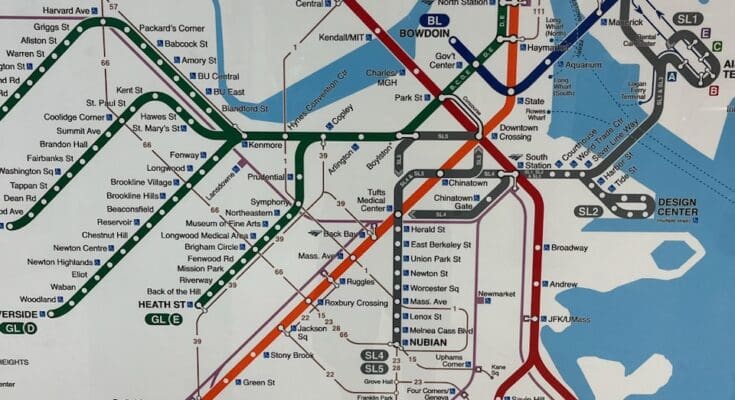Boston City Center Exploration Game

Tickets are available every day. Start at the Boston Public Library.
1. Introduction to Boston’s Rich Historical Background
Boston, the capital of Massachusetts and one of the oldest cities in the United States, is steeped in a rich and captivating history. From its humble beginnings as a Puritan settlement in the 17th century to its pivotal role in the American Revolution, Boston has left an indelible mark on the nation’s story. As we delve into the history of this remarkable city, we will explore its colonial roots, its significant contributions to the fight for independence, the waves of immigration and industrialization that shaped its identity, and the preservation efforts that have allowed us to appreciate its historical landmarks and neighborhoods. Join us on a journey through time as we unravel the fascinating tapestry of Boston’s past.
1. Introduction to Boston’s Rich Historical Background
Boston, the capital of Massachusetts, is a city steeped in history. From its humble beginnings as a Puritan settlement to its pivotal role in the American Revolution, Boston’s past is both fascinating and influential. This article will take you on a journey through the key events that have shaped the city’s history, exploring how its geography, trade, and culture have made it a hub of innovation and progress.
The Founding of Boston
In 1630, a group of English Puritans seeking religious freedom established the settlement of Boston. Led by John Winthrop, these settlers aimed to create a “city upon a hill” that would set an example for others to follow. With its strategic location on the Massachusetts Bay, Boston quickly became a center of trade and commerce.
Boston’s Early Years: A Center of Trade and Commerce
Due to its proximity to the ocean and its natural harbor, Boston became a bustling hub of trade in the 18th century. The city’s merchants engaged in the triangular trade, exchanging goods with the West Indies and Europe. As Boston’s wealth grew, so did its influence and cultural development.
The Importance of Boston’s Geography
Boston’s geography played a crucial role in its historical significance. Its harbor made it an ideal port for trade, allowing goods and ideas to flow freely. Additionally, the city’s close proximity to other influential colonies, such as Plymouth and Salem, fostered a sense of collaboration and shared purpose.
2. Colonial Boston: From Puritan Settlement to Revolutionary Hotbed
The Puritan Settlement of Boston
The Puritans who settled in Boston brought with them a strict moral code and a desire to create a society based on their religious beliefs. They established a theocratic government that regulated behavior and enforced Puritan values. This strong sense of community and piety shaped Boston’s character for generations to come.
Boston’s Role in the Great Awakening
In the 18th century, Boston played a pivotal role in the Great Awakening, a religious revival that swept through the American colonies. Preachers like Jonathan Edwards and George Whitefield delivered passionate sermons in Boston’s churches, stirring the souls of the city’s residents and sparking a renewed religious fervor.
Tensions and Conflicts in Colonial Boston
As the American colonies grew, tensions between the colonists and British authorities began to escalate. Boston became a hotbed of revolutionary sentiment, with protests against British taxation and the imposition of British rule. These tensions eventually led to the events that would ignite the American Revolution.
3. Boston’s Role in the American Revolution: The Birthplace of Freedom
The Boston Massacre and its Impact
One of the key events that fueled the flames of revolution was the Boston Massacre in 1770. British soldiers fired upon a crowd of colonists, resulting in several deaths. This tragic incident galvanized the colonists and strengthened their resolve to fight for independence.
The Boston Tea Party and the Intolerable Acts
In 1773, a group of colonists in Boston, disguised as Native Americans, boarded British ships and dumped thousands of pounds of tea into the harbor. This act of defiance, known as the Boston Tea Party, was a direct response to the Tea Act and further strained relations between the colonists and the British government, leading to the imposition of the Intolerable Acts.
The Battles of Lexington and Concord
The first shots of the American Revolution were fired in the nearby towns of Lexington and Concord in 1775. These battles marked the beginning of the Revolutionary War and solidified Boston’s position as a focal point of the struggle for independence. The city became a base for the Continental Army and witnessed significant military action throughout the war.
4. The Impact of Immigration and Industrialization on Boston’s History
The Irish Immigration Wave
In the 19th century, Boston experienced a significant wave of Irish immigration. Seeking refuge from the Great Famine, thousands of Irish immigrants arrived in the city, forever shaping its cultural landscape. Today, Boston’s Irish heritage can still be felt in its traditions, festivals, and neighborhoods.
Boston’s Transformation into an Industrial Hub
The Industrial Revolution brought profound changes to Boston’s economy. The city transformed from a trading hub into a center of industry, with textile mills, factories, and shipyards emerging along its waterfront. This industrial growth attracted a diverse range of workers and contributed to Boston’s rapid expansion.
Social and Economic Challenges During the Industrial Revolution
While industrialization brought prosperity to some, it also brought significant challenges. Working conditions were often harsh, and income inequality widened. Waves of immigration, rapid urbanization, and labor unrest created a complex social and economic environment in Boston, with ongoing struggles for workers’ rights and social equality.
Boston’s rich history is a testament to the resilience and determination of its inhabitants. From its early days as a Puritan settlement to its pivotal role in the American Revolution and subsequent industrialization, Boston’s story reflects the spirit of a city that has continuously evolved and reinvented itself. In exploring its past, we gain a deeper understanding of the forces that have shaped not only Boston but also the United States as a whole. So, put on your walking shoes and get ready to step back in time as you explore the fascinating history of Boston.and Museums
The Freedom Trail: A Guided Journey through Boston’s Past
5. Notable Landmarks: Exploring Boston’s Historical Architecture and Monuments
The Old State House: A Symbol of Revolutionary Boston
Step into the shoes of Revolutionary-era Bostonians as you visit the iconic Old State House. This historic landmark served as the seat of British colonial government and witnessed pivotal moments in American history, including the Boston Massacre. Take a tour to discover the secrets hidden within its walls and marvel at the beautiful Georgian architecture that has withstood the test of time.
Faneuil Hall: The Cradle of Liberty
Prepare to be transported back to the days of colonial rebellion when you step inside Faneuil Hall, known as the “Cradle of Liberty.” As a marketplace and a venue for important meetings and speeches, this historic building played a significant role in the American Revolution. Today, it continues to bustle with activity as a vibrant marketplace and a haven for foodies.
The Paul Revere House: A Glimpse into Colonial Life
Ever wondered what life was like in colonial Boston? Explore the home of the famous American patriot, Paul Revere. This modest 17th-century house offers a fascinating glimpse into the daily life and struggles of colonial Americans. Marvel at the simple yet functional design, and imagine yourself living in the midst of the American Revolution.
6. Boston’s Immigrant Communities: Cultural Contributions and Challenges
The Italian Influence in Boston’s North End
Indulge your senses in Boston’s vibrant North End, where Italian immigrant heritage thrives. This charming neighborhood offers a delightful culinary experience with its authentic Italian restaurants and bakeries. Immerse yourself in the lively atmosphere and celebrate the rich cultural contributions of Boston’s Italian community.
The Chinatown District: A Thriving Asian Community
Step into the bustling streets of Boston’s Chinatown and be captivated by its vibrant energy. A hub for Asian culture and cuisine, this neighborhood showcases the diversity and resilience of the city’s Asian community. Explore the shops, sample traditional dishes, and learn about the traditions and history that have shaped this thriving district.
Exploring Boston’s Jewish Heritage
Delve into the history and impact of Boston’s Jewish community as you visit the city’s synagogues, cultural centers, and museums. Explore the journey of Jewish immigrants, from their arrival in Boston to their lasting contributions in various fields. Gain insights into the challenges faced and the rich cultural tapestry they have woven into the fabric of the city.
7. Boston’s Historical Neighborhoods: Tracing the Evolution of the City
Beacon Hill: The Heart of Old Boston
Wander through the picturesque streets of Beacon Hill and be transported back in time. Admire the well-preserved 19th-century architecture and elegant townhouses that exude old-world charm. This prestigious neighborhood offers a glimpse into Boston’s past, with its cobblestone streets and gas-lit lanterns creating a nostalgic ambiance.
The Back Bay: Victorian Splendor and Urban Renewal
Experience a harmonious blend of Victorian elegance and modern city living in Boston’s Back Bay neighborhood. Stroll along Commonwealth Avenue, lined with stunning brownstones and tree-lined boulevards. Marvel at the architectural beauty of Trinity Church and the Boston Public Library, and immerse yourself in the vibrant energy of this dynamic district.
The South End: From Victorian Mansions to a Diverse Community
Discover the South End, a neighborhood that underwent a transformation from grand Victorian residences to a diverse and vibrant community. Explore the picturesque Victorian architecture, enjoy the thriving arts scene, and savor diverse culinary offerings. This neighborhood perfectly encapsulates Boston’s ability to embrace change while preserving its historical roots.
8. Preserving Boston’s History: Efforts in Conservation and Heritage Tourism
The Boston Historical Society and its Preservation Initiatives
Learn about the Boston Historical Society and the dedicated efforts to preserve the city’s rich history. From archival preservation to educational programs, the society plays a vital role in ensuring that future generations can appreciate and learn from Boston’s past. Discover their ongoing initiatives and how you can contribute to this noble cause.
Heritage Tourism: Exploring Boston’s Historical Sites and Museums
Embark on an exciting journey through time with Boston’s heritage tourism offerings. Explore the city’s numerous historical sites and museums, each offering a unique perspective on Boston’s rich history. Whether you choose to walk the famous Freedom Trail or explore the fascinating exhibits at the Museum of Fine Arts, there is something for everyone to enjoy and learn from.
The Freedom Trail: A Guided Journey through Boston’s Past
Follow in the footsteps of history as you embark on the renowned Freedom Trail. This 2.5-mile trail takes you through 16 significant historical sites, providing a comprehensive and immersive experience of Boston’s revolutionary past. Prepare to be awed by landmarks like the Massachusetts State House, Old North Church, and the USS Constitution. Lace up your walking shoes and let the Freedom Trail be your guide to Boston’s captivating history.In conclusion, exploring Boston’s history provides us with a deeper understanding of the city’s origins, its pivotal role in the birth of a nation, and its evolution over time. From the struggles and triumphs of the early settlers to the waves of immigration and industrialization that shaped its identity, Boston’s history is a testament to the resilience and spirit of its people. As we continue to preserve and celebrate its historical landmarks and neighborhoods, we ensure that future generations can appreciate and learn from the rich tapestry of Boston’s historical legacy. So, come and immerse yourself in the captivating history that Boston has to offer, and discover the stories that have shaped this remarkable city.

